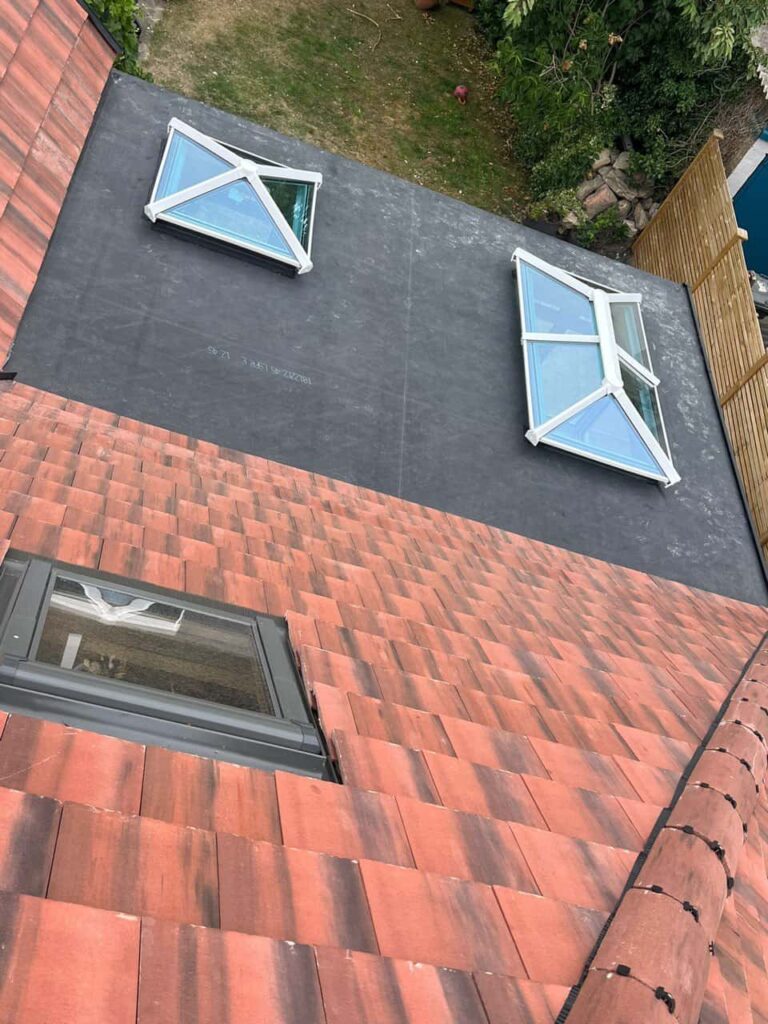The pitch of a roof plays a crucial role in a home’s overall structure, appearance, and resilience to weather conditions. Whether you’re constructing a new home or renovating, selecting the right pitch is essential for optimising both functionality and aesthetics. Here’s what homeowners need to know to make the best choice for their property.
Why Roof Pitch Matters
The pitch, or slope, of a roof is not just a design preference; it impacts everything from water drainage to interior space and even energy efficiency. Here’s why pitch is a fundamental aspect of roof design:
- Water Drainage: A steeper pitch allows for better drainage, minimising the risk of leaks and ponding. It’s particularly useful in areas with heavy rainfall.
- Wind Resistance: Roofs with a lower pitch can offer better wind resistance, while steeper pitches work well in shedding debris.
- Energy Efficiency: The pitch can influence airflow and insulation within the attic or loft space, affecting heating and cooling efficiency.
- Maintenance: Steeper roofs often shed rain, leaves, and snow more effectively, which can reduce maintenance needs.
Common Roof Pitch Types
Understanding the different types of roof pitches can help you determine which is best for your specific needs:
- Flat Roof (0-10 degrees): Often chosen for its sleek, modern look, flat roofs are generally easier to construct but require regular maintenance to avoid water pooling.
- Low Slope (10-20 degrees): Low-slope roofs are popular for minimalist designs, providing a good compromise between water drainage and a contemporary aesthetic.
- Medium Pitch (20-30 degrees): This pitch offers a balanced look suitable for a variety of architectural styles, providing ample drainage and allowing for some attic space.
- High Pitch (30-45+ degrees): High-pitched roofs are ideal for areas with heavy snowfall, as they allow snow to slide off easily. They can also create a more spacious loft area and offer a classic appearance.
Factors to Consider When Choosing Your Roof Pitch
Selecting the appropriate roof pitch involves taking multiple factors into account, as the wrong choice could lead to increased maintenance or structural issues. Here are key considerations:
- Climate
If you live in an area prone to heavy rain or snow, a higher pitch is often recommended as it allows for better drainage. Conversely, lower pitches may be suitable for windy regions where steep angles could catch the wind. - Architectural Style
The pitch can complement the aesthetic of the house. For example, traditional homes may benefit from a medium to high pitch, while contemporary homes often look striking with a low pitch or flat roof. - Budget
Steeper roofs require more materials, making them more expensive. For homeowners on a tight budget, a low or medium pitch might be more practical. - Purpose of the Loft Space
Higher pitches provide more room in the attic, which can be converted into extra storage or living space. If you intend to make use of the loft, consider a higher pitch to increase headroom and usability. - Local Building Regulations
Some areas have restrictions on roof height or style. It’s wise to check with local regulations or consult a roofing professional before making your final decision.
Benefits and Drawbacks of Different Roof Pitches
Every roof pitch has its advantages and potential downsides, depending on the needs of the property:
- Flat and Low Pitches
Benefits: Cost-effective, easier to install, and provides a sleek, modern look.
Drawbacks: May struggle with drainage and require more maintenance, especially in areas with heavy rain or snowfall. - Medium Pitch
Benefits: Versatile in style, provides good drainage, and can be affordable.
Drawbacks: May not be as efficient at shedding snow as steeper roofs. - High Pitch
Benefits: Excellent drainage, ideal for cold climates, and provides spacious attic areas.
Drawbacks: Higher installation costs and may be more affected by strong winds.
Maintenance and Care by Roof Pitch
Each roof pitch requires specific maintenance practices to ensure longevity and durability:
- Flat Roofs: Require regular checks for ponding and debris build-up to prevent leaks.
- Low Pitched Roofs: May need occasional debris removal and regular waterproofing treatments.
- Medium and High Pitched Roofs: Less frequent maintenance but should be checked for loose shingles or tiles, especially after extreme weather.
Conclusion
Selecting the right pitch for your roof is a critical decision that impacts the aesthetics, functionality, and longevity of your home. From cost considerations to climate suitability, each factor plays a role in determining the best roof pitch for your needs. With professional guidance and a clear understanding of your property’s requirements, you can choose a roof pitch that not only enhances your home’s appearance but also supports its structural integrity.
At Smethwick Roofing Repairs, we’re here to help you choose and maintain the ideal roof pitch for your home. Contact us today for expert advice and high-quality roofing solutions tailored to meet your specific needs. Let’s make sure your roof serves you well for years to come.
Call us on: 0121 270 9 085
Click here to find out more about Smethwick Roofing Repairs
Click here to complete our contact form and see how we can help with your roofing needs.

